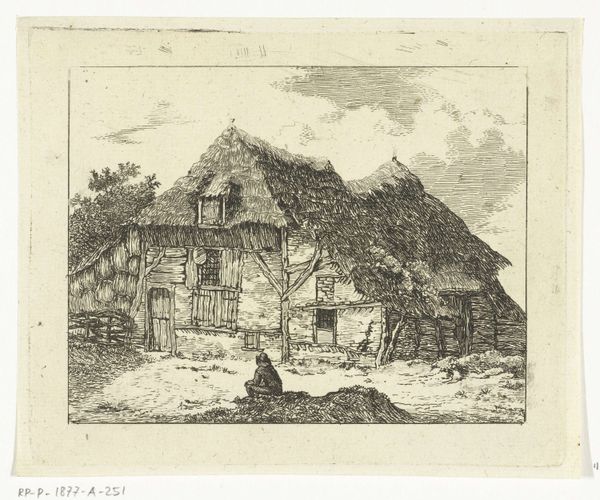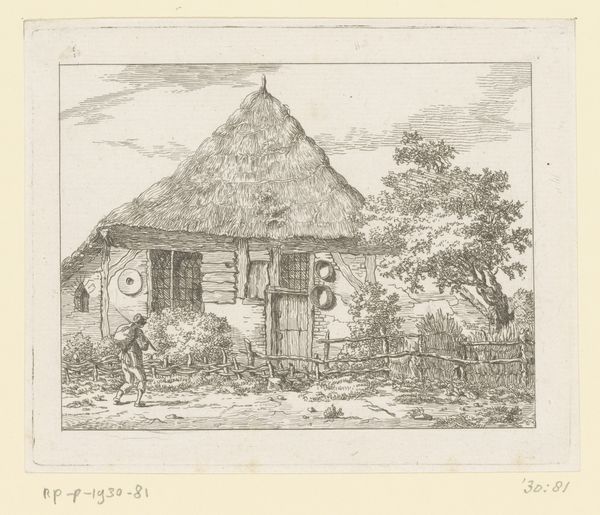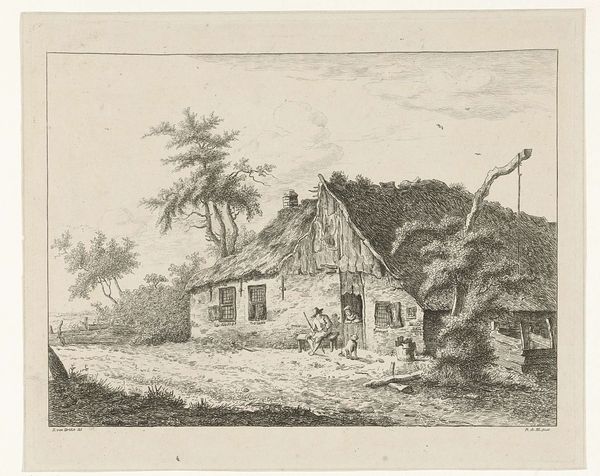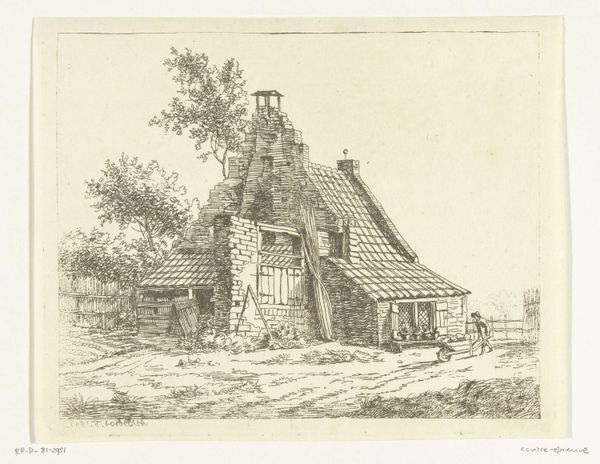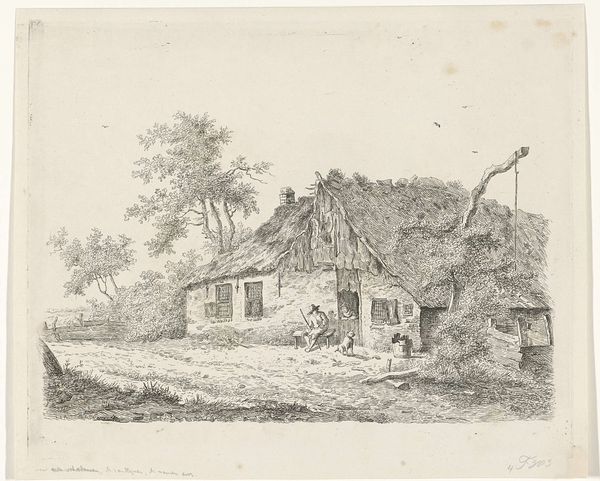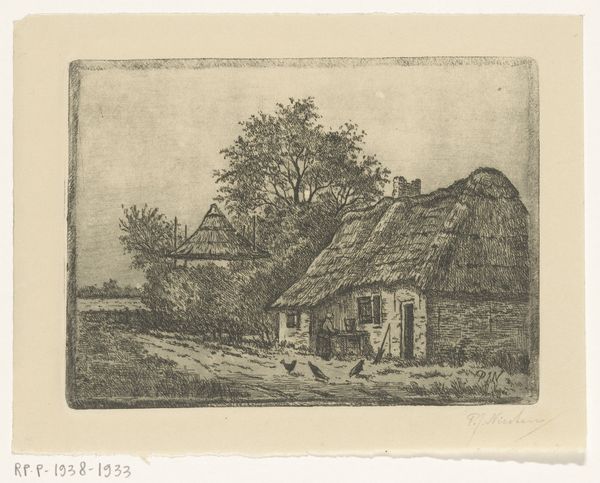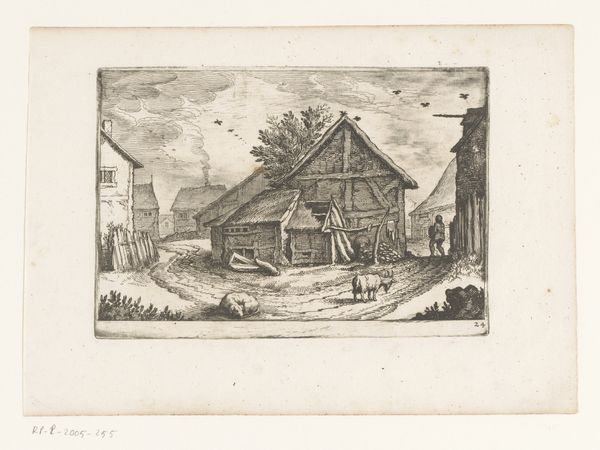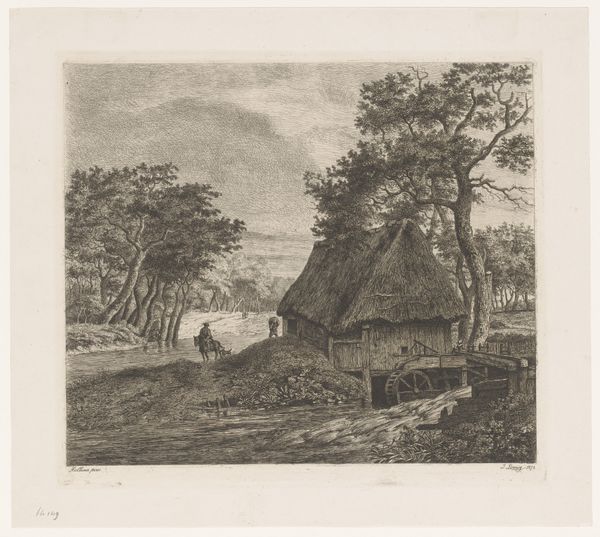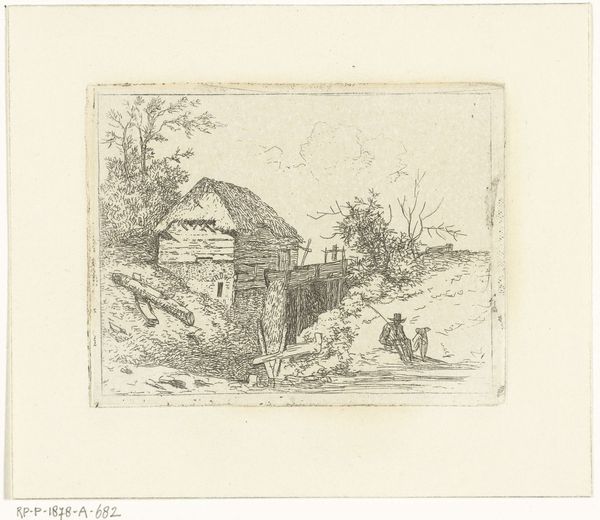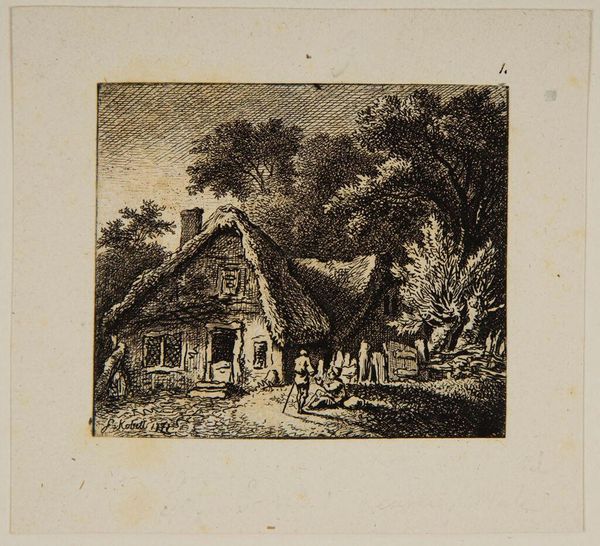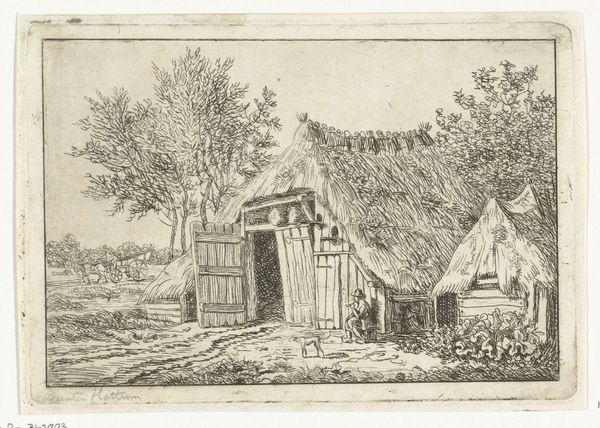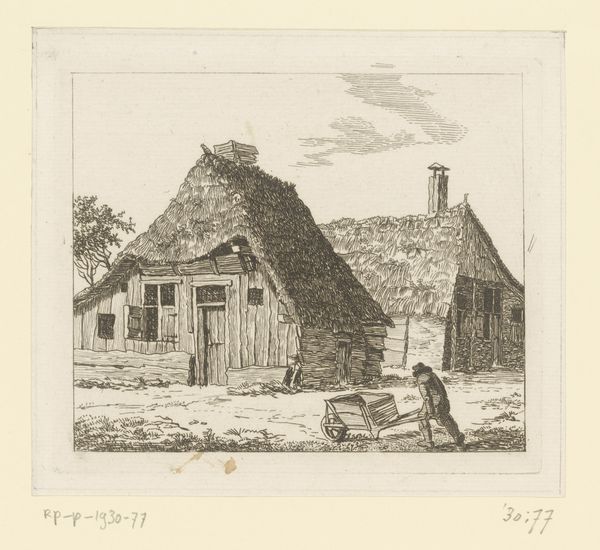
drawing, print, etching
#
drawing
# print
#
etching
#
landscape
#
etching
#
genre-painting
Dimensions: height 135 mm, width 165 mm
Copyright: Rijks Museum: Open Domain
Curator: Anthonie van den Bos created this etching, "Vrouw staande voor een huis te Staphorst" sometime between 1778 and 1838. Editor: There’s something deeply unsettling about the hyper-detailed rendering of this humble scene, almost as though there’s a lurking unease. Curator: The unease perhaps lies in the vernacular details; that particular rendering of rural life was very consciously presented, often carefully cultivated. Note how Van den Bos uses precise lines in the print-making to depict that thatched roof, those quaint windows… everything contributes to an idea of authentic Dutch rusticity. Editor: Precisely! It almost reads as propaganda. Genre paintings from that era were laden with this very specific vision of the idyllic, hardworking countryside versus the supposedly corrupt city. This piece seems to participate in that narrative, offering a counterpoint. Curator: Yes, there is that dichotomy in Dutch painting of the era! But I’m drawn to how the house almost acts as a character here. Observe how the windows appear like eyes, gazing upon us, its ancient wooden beams creating almost a face like one of the pagan symbols used in old rural buildings to repel evil spirits and invoke protection, prosperity, or fertility. Editor: A loaded, potentially oppressive sense of “home.” The lone woman standing before the house–seemingly on guard, rooted to the soil like the gnarled trees around her. This calls to mind deeply gendered roles, expectations placed on women within that domestic sphere. There's an implication of limited agency in her representation. Curator: The very deliberate rendering asks us to examine not just what is depicted but why, which echoes through the historical consciousness still carried forward today. Editor: I agree. Deconstructing that assumed idyllic imagery reveals just how much cultural meaning becomes packed into such seemingly simple, pastoral images, revealing layers of historical bias and assumptions about gender, class, and the relationship to land.
Comments
No comments
Be the first to comment and join the conversation on the ultimate creative platform.
